Icons of Motoring: A new series looking at some of the men and women who personify the cult of cars. Their love of motoring helped define them, turned them from just another celebrity into something that transcends time and trend. In this edition, we take a look at the “king of cool” – Steve McQueen.
“You lay your stinkin’ hands on me again and I swear, I’ll kill ya.”
It could have been a line from one of the many films Steve McQueen starred in. Maybe to a German guard in “The Great Escape”, or to a fellow outlaw in “The Magnificent Seven”. It’s a line befitting the “king of cool”. But it wasn’t from a movie. It was a passionate outburst, the sound of someone pushed too far, not going to take it anymore. Fourteen years old, threatening his abusive stepfather having just been thrown down some stairs, Steve McQueen had had enough.
A petty criminal with a troubled home life, not the background you expect for one of the biggest movie stars of all time. How McQueen turned his life around would make a great film in itself. He would go on not only to become the highest paid movie star of his time, but to be equally famous for his love of cars and motorcycles. A man who couldn’t decide if he was an “actor who races, or a racer who acts”. His cars and motorcycle collection is the envy of any collector. Passing away at just fifty years old, McQueen’s legacy lives on to this day.
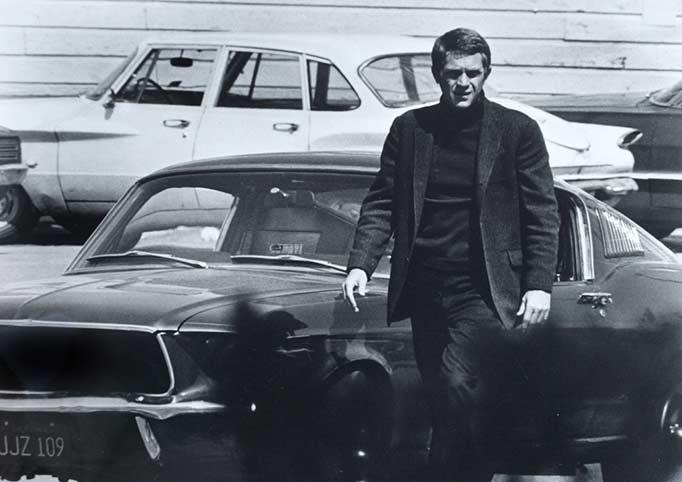
“If I hadn’t made it as an actor, I might have wound up a hood.”
Born on the 24th March 1930, Terence Steven McQueen’s tough life began almost from birth. His father, a stunt pilot for a flying circus, abandoned his mother Julia Ann just six months after they met. His mother, an alcoholic who was quite possibly a prostitute, struggled with looking after young Steve, and quickly shipped him off to her Uncle Claude, a farmer in Slater, Missouri. Life on the farm was the happiest time in young McQueen’s life. It was here where he first developed his passion for racing, a tricycle gifted to him by his uncle being the catalyst.
Unfortunately life would not remain simple for McQueen. Between happy periods on the farm, he was often forced to move back to live with his mother. This often led to fights and abuse as he and his mother were regularly beaten by whichever violent new man was in his mother’s life. The rough home life with his mother forced McQueen down a dark road, becoming involved with street gangs and petty crime. After a brief stint working for a circus, McQueen was back at his mother’s home and back to his life of crime. Caught stealing hub caps, his latest step father viciously beat McQueen, causing him to utter his threat.
“You lay your stinkin’ hands on me again and I swear, I’ll kill ya.”
Redemption with the Boys Republic
It was after this confrontation that McQueen was sent to the California Junior Boys Republic. A place for troubled boys, the home quickly changed McQueen who matured and became a leader amongst the other juniors, even elected to the Boys Council who ran the place. The time spent in the Boys Republic would have a big impact on his later life, with McQueen regularly returning to give talks after he became famous, donating items such as jeans and razors that he requested from movie studios as part of his contracts.
After the Boys Republic, McQueen returned home to his mother, before taking up a string of different jobs. Starting as a sailor in the merchant Navy, he also worked as a towel boy in a brothel, oil rigger, salesman at a carnival, and as a lumberjack. He joined the US Marines in 1947, briefly returning to his rebellious ways before embracing the rigid discipline of the military. Proving himself to be a hero off the screen, McQueen saved the lives of five marines during an Arctic exercise gone wrong. He left the Marines in 1950, using the money earned to start on the path to the screen icon we all know and love today.
“The Marines gave me discipline I could live with. By the time I got out I could deal with things on a more realistic level. All in all, despite my problems, I liked my time in the Marines.”
The birth of an icon
McQueen joined the Sanford Meisner Neighborhood Playhouse in 1952, learning the acting skills that would eventually turn him into the king of cool. To help support his acting, McQueen began motorcycle racing at weekends, winning hundreds of dollars in prize money – a big payday back in the 1950s. McQueen raced on a Harley-Davidson, the first of many motorbikes the icon would own. He was soon spotted by Hollywood talent scouts, starting to appear in B Movies like “The Blob” and “The Great St Louis Bank Robbery”.
His big break came when he starred in the western TV Series “Wanted: Dead or Alive”, as bounty hunter Josh Randall. McQueen would become the first big television star to successfully crossover into movies. After appearing alongside Frank Sinatra in “Never So Few”, McQueen made his film breakthrough in “The Magnificent Seven”. His performance shot him to international fame, the world of television becoming far too small for McQueen who soon quit his hit TV series.
After “The Magnificent Seven” came one of McQueen’s most iconic roles, Captain Virgil Hilts “the Cooler King” in “The Great Escape”. Famous for the scene where he leaps over a barbed wire fence on his motorbike, McQueen wanted to perform the stunt himself. Insurance fears put paid to that idea, with stuntman and friend of McQueen Bud Elkins performing the stunt in his place. McQueen’s skills behind the bike came in handy elsewhere, even leading to him portraying one of the German bikers chasing after his character in several scenes, achieved through careful editing.
More great performances followed, with an Oscar nomination for his role in “The Sand Pebbles” in 1966. His most famous film role came in 1968, when he starred in “Bullitt”. The iconic chase scene cemented his status as King of Cool, and made him one of the highest paid actors in cinema. Further film roles came until 1974, where after “The Towering Inferno”, McQueen took a step back from acting to focus on motorcycle racing and travelling the country.
Sadly in 1980, Steve McQueen died as a result of lung cancer, caused by asbestos inhalation. The man may have died, but the legend lives on and McQueen is still regarded as one of the most popular film actors of all time. As well as his passion for acting, his love of cars and motorbikes has made him an icon of motoring.
McQueen never lost his bad boy image.
McQueen’s Machines
Aside from motorcycles, McQueen’s most famous association is with the Ford Mustang. Used for the iconic chase scene in Bullitt, the Ford Mustang saw a surge in popularity after McQueen drove it during the film. The actor tried to buy the car. Somewhat surprisingly, he was unsuccessful, with the location of the iconic Mustang unknown to this day.
The link between McQueen and the Mustang was used by Ford, who created an advert with McQueen driving their newest Ford Mustang back in 2005. Using computer generated imagery and a body double, the advert resurrects McQueen to race their Mustang around a racetrack built inside a cornfield.
McQueen gathered quite the collection of cars and motorbikes during his lifetime. The cars he owned are now some of the most iconic, rarest cars around. In particular, McQueen had a passion for sportscars, especially those that had a history of success at the 24 Hour Race of Le Mans.
Porsche 917
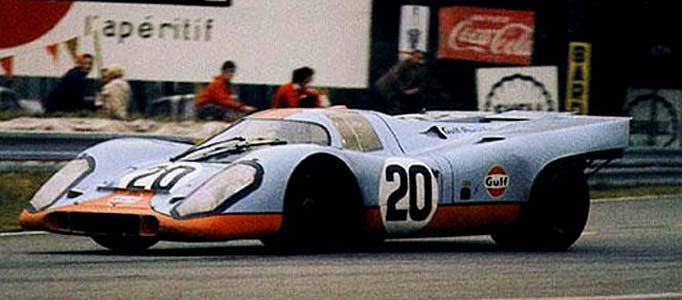
The 917 is a race car most famous for its wins at the 24 Hours of Le Mans. McQueen drove these during the film “Le Mans”. 0-62mph in 2.3 seconds, it can top the ton in 5.3, and has a top speed of 240 mph.
Porsche 908

Porsche 908
Also driven by McQueen in “Le Mans”, the 908 has an open spyder chassis, and was designed to excel on tracks with lots of twists and turns such as the Nurburgring.
1970 Porsche 911S
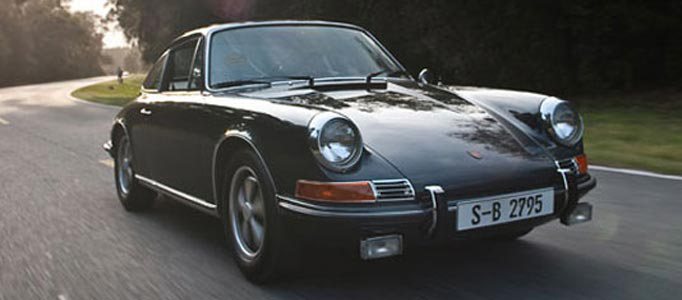
McQueen’s actual Porsche 911S
The original Porsche 911 was the first to have the iconic shape associated with the Porsche marque.
Ferrari 512S
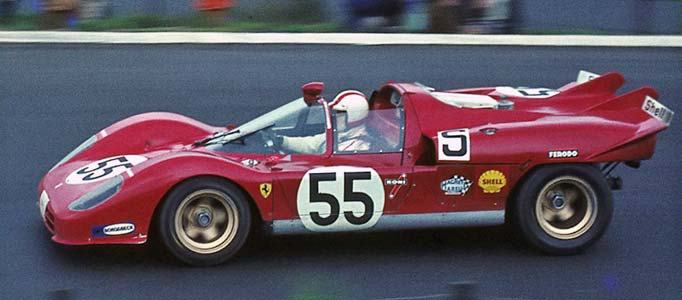
Ferrari 512S
The Ferrari 512S was a collection of 26 race cars, one of which was also used in the “Le Mans” films. Enzo Ferrari sold half his business to Fiat to help fund the development of this car.
1963 Ferrari 250 Lusso Berlinetta
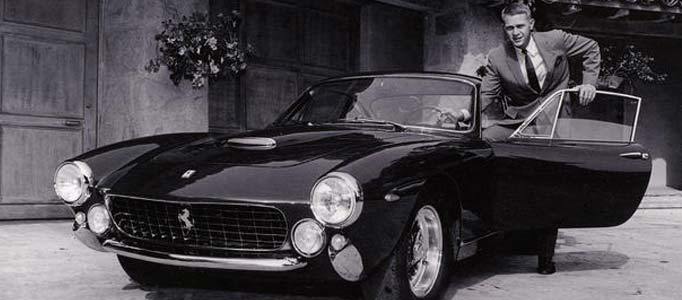
McQueen’s brown Ferrari 250
The 250 was one of the early sports cars built by Ferrari and became their most popular early model. McQueen’s car sold for $2.31 million at auction in 2007.
Ferrari 275 GTB
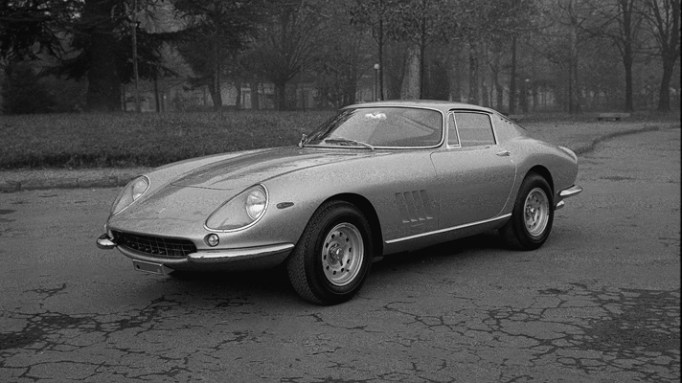
Ferrari 275
The 275 was the next evolution of the 250, and is often labelled as one of the greatest sportscars of all time.
Jaguar D-Type XKSS
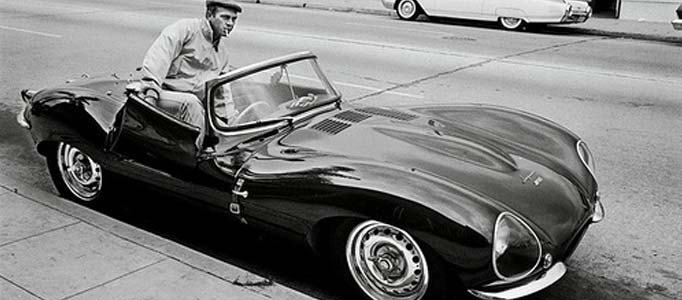
Jaguar D Type XKSS
The Jaguar D-Type was a race car famous for winning the Le Mans 24 Hour race three years in a row. Just 16 XKSS variations were built in the car’s history.
Porsche 356 Speedster
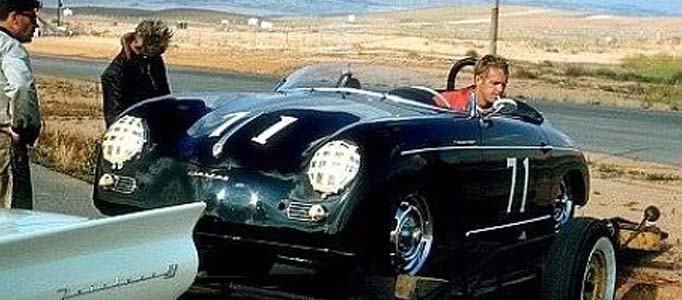
McQueen preparing his Porsche 356 for a race.
Unlike the other cars, the Porsche 356 was more of a luxury model, and was the first production automobile built by Porsche.
1962 Shelby Cobra
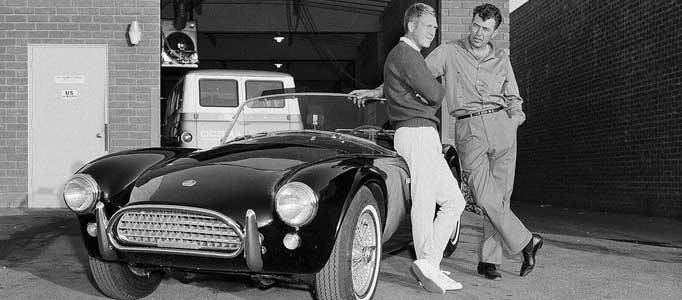
McQueen beside his Shelby Cobra
Known as the AC Cobra in the UK, the Shelby Cobra is a British sports car with an American engine.
Ford GT 40
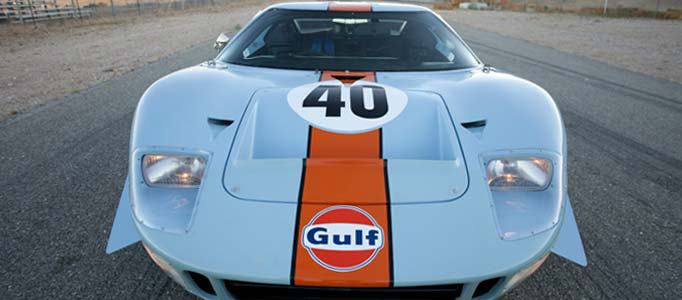
McQueen’s Ford GT 40 with the iconic livery
Another Le Mans winning car, the GT 40 was the first American car to win the famous endurance race.
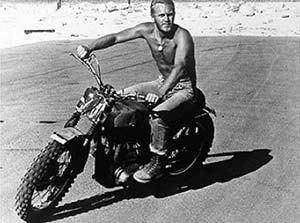
Away from cars, McQueen’s motorcycle collection was even more impressive. In total he had 130 motorcycles, and was a particular fan of the vintage Indian bikes. All of the bikes in his collection were sold within four years of his death and continue to hold a high value because of their association to him.
In 2006, a 1937 Crocker motorcycle sold for $276,500, a world record price. His 1970 Porsche 911S sold for $1.375 million, and the Ferrari 275 GTB he drove sold for $11 million dollars in 2014.
“I’m not sure whether I’m an actor who races or a racer who acts.”
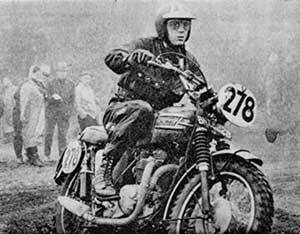
If he had not been an actor, McQueen could easily have made a career for himself as a racing driver. Excelling both on and off road, McQueen regularly raced alongside his acting day job. In 1961, McQueen entered the British Touring Car Championship for a single race, driving a Mini at Brands Hatch. He performed well, finishing third overall. In 1970, he entered the 12 Hours of Sebring race, winning in his class and missing out on victory by 23 seconds. What made this more remarkable was the fact that McQueen was racing with a broken foot in a cast, caused by a motorcycling accident.
Off road racing included the Baja 1000, the Mint 400 and racing at the Elsinore Grand Prix. McQueen formed his own off road racing team, and his production company created the “On Any Sunday” motorcycle documentary, regarded as a classic by motorcycle enthusiasts. McQueen also designed a special bucket seat for use in motorsports. His passion for racing was rewarded with an induction into the off road racing hall of fame in 1978.
In addition to racing, McQueen was also a keen flyer, perhaps taking after the father he never knew. He owned three planes in total, including a 1931 Pitcairn PA-8 Biplane.
Steve McQueen: Top Five Films
The Magnificent Seven
The film that made McQueen a superstar, he was supposed to be a second lead to the star of the film Yul Brynner. But his intense acting style drew a lot of attention, Brynner apparently furious about being upstaged by McQueen.
The Great Escape
Cementing his position as one of the great actors of his generation, McQueen’s charismatic turn helped turn the film into a classic. The scene where he jumps the barbed wire fence on his motorbike is one of the most iconic in film history.
Bullitt
This San Francisco set crime thriller is primarily remembered for one reason – the car chase. Ford Mustang versus Dodge Charger through the winding streets of San Francisco, it is the most iconic car chase in movie history.
Le Mans
Perhaps not his best film when it comes to story, no other film that McQueen appeared in allowed him to better demonstrate his passion for motorsport and racing.
The Sand Pebbles
The only Oscar nomination McQueen received, his role as a rebellious Navy machinist proved that he wasn’t just an icon, he could act too.
What made Steve McQueen the “king of cool”?
It was clear from the start that McQueen would not be your normal movie star. Sure he had the rugged good looks and intense blue eyes that meant he didn’t look out of place. It his demeanour that made him stand out, that sort of arrogance that meant your eyes were drawn to him whenever he was on screen. You could argue that he never changed much on screen, playing variations of the same character in every film he appeared in. That never made him any less watchable.
Friendships with famous people like James Garner and Bruce Lee only added to the idea that this is a man to aspire to be. He never seemed to be trying hard to be cool. He just was. Effortless. Even though he died at fifty years old, it still feels like he was take from us too young. Like James Dean or Kurt Cobain, an icon that burned brightly until they were gone all too soon. It’s what makes the adverts that re-purpose his image feel so tacky. No computer replication or camera trickery can replace the real thing. That’s what makes him the “king of cool”.
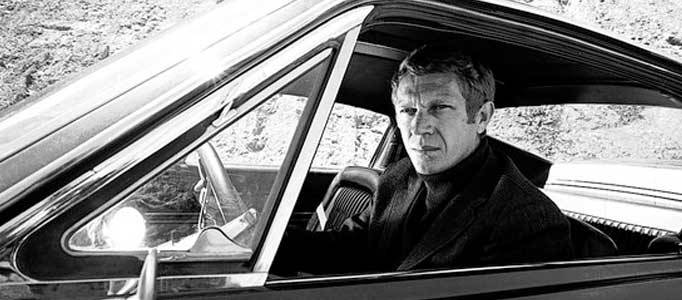
Sources
Wikipedia.org
Image sources: Porsche 908 -“1971-05-29 Vic Elford, Porsche 908-3 (Hatzenbach)” by Lothar Spurzem – Own work. Licensed under CC BY-SA 2.0 de via Wikimedia Commons – http://commons.wikimedia.org/wiki/File:1971-05-29_Vic_Elford,_Porsche_908-3_(Hatzenbach).jpg#/media/File:1971-05-29_Vic_Elford,_Porsche_908-3_(Hatzenbach).jpg”
Ferrari 512 S – “Vacarella, Nino – Ferrari 512 S – 1970-05-31″. Licensed under CC BY-SA 2.0 de via Wikimedia Commons – https://commons.wikimedia.org/wiki/File:Vacarella,_Nino_-_Ferrari_512_S_-_1970-05-31.jpg#/media/File:Vacarella,_Nino_-_Ferrari_512_S_-_1970-05-31.jpg”
http://commons.wikimedia.org/




 Facebook
Facebook Twitter
Twitter Instagram
Instagram LinkedIn
LinkedIn Youtube
Youtube